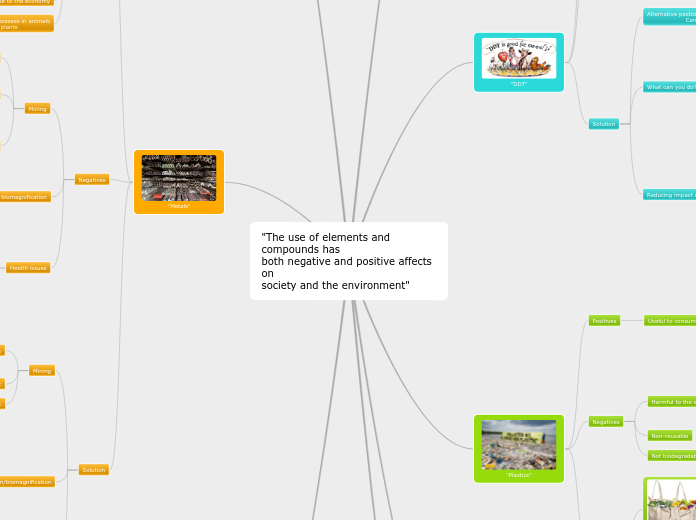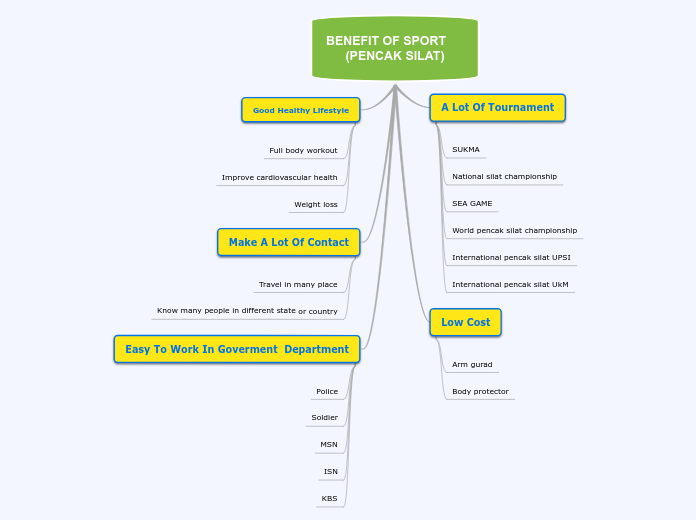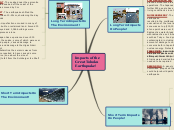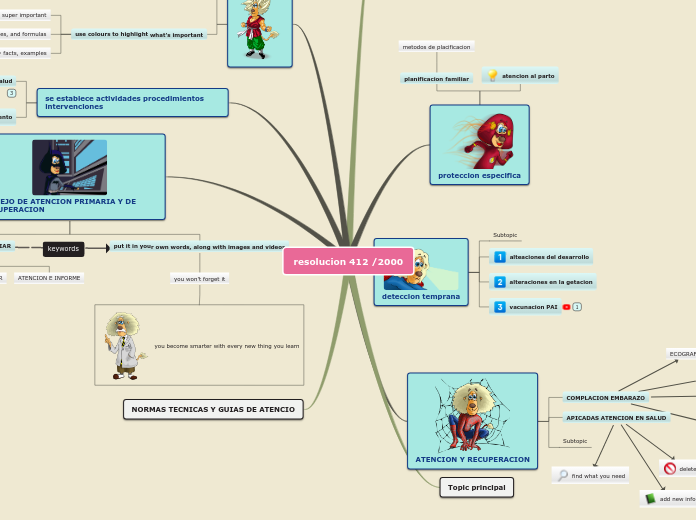"The use of elements and compounds has
both negative and positive affects on
society and the environment"
"Solubility and plant
fertilizers"
Plant buffer
Planting small plants to help filter water
Bushes
Grasses
Shrubs
Trees
Disruption of cycles
Phosphorus
Nitrogen
Causes harm to ecosystems
Lack of algae
Living organisms die
Causes runoff
Eutrophication
Keeps plants healthy
More affordable
Lower labor costs
Restores nutrients within the soil
Increased crop yield
"Metals"
Recycling metals properly
Bioaccumulation/biomagnification
Limit industries use of toxic
substances/metals
Mercury
Avoiding use of PVC
Can cause lead build up in water
Disposing both household chemicals/oils
properly
Clean areas that have been exposed to
metals
Limit the use of heavy metals
Eco-friendly equipment
Replanting/replenishing the environment
Alternative energy sources
To much iron in your blood
Sever damage to the heart
High exposure can
damage organs
Lungs
Kidney
Brain
Bioaccumulation and biomagnification
In animals organs
Liver
Kidneys
Mining
Climate change
Waste
Toxic chemical
Can easily leak into the soil and water
Cyanide
Toxic to both humans
and animals
Disrupts ecosystem/environment
Essential for processes in animals
and plants
Valuable to the economy
Health industry
Retain heat
Prosthetics
X-Rays
Electric and electronic industry
Smoke detectors
Phones
Vehicles
Useful to society/consumers
Aluminum
Gold
Lead
Tungsten
Titanium
"Sodium Fluoride"
Solutions
Monitoring the amounts of fluoride in the
water
Use a water filter
This will help get rid of fluoride in your
water
Fragile bones
Poor brain development in children
Reduces tooth decay
Prevents cavities
Strengthens enamel
"Diamond Mining"
Reducing outputs
Giving back to the environment
Replanting trees, grass, bushes
Sustainable equipment
Waste management
Reduce Inputs
Pumping ground water and
diverting surface water
Use alternative energy sources
Solar power
Wind power
Contributes to climate change
Produces waste
Causes pollution
Disrupts water quality
Draining lakes
Harms wildlife and plants
Disrupts the environment
Contributes to Canada's economy
$1.5 billion
"Road Salt"
Solar panels
Replace asphalt
Heating pipes in the road
Shovel prior to putting down road salt
Mindful of the amount of salt your using
Harms the environment
When large amounts of road
salt gets dumped on the roads
Makes it easier for cars to breakdown ice
Reduces injuries and deaths
Makes driving in winter safer
"Plastics"
Use proper recycling methods
Reusable containers and bottles
Cloth/paper bags
Not biodegradable
Non-reusable
Harmful to the environment
Causes harm to animals
Fills up landfills
Useful to consumers
Straws
Toys
Water bottles
Containers
Grocery bags
"DDT"
Reducing impact on animals
IPM Method
Prevention
Control
Monitoring/identifying pests
Never apply pesticides when its
raining/going to rain
Plant buffer strips
What can you do?
Find out which foods have a higher
amount of pesticides
Grow your own produce
Wash your produce
Buy organically grown foods
Alternative pesticides being used in
Canada
Ferric sodium
Ammonium soap and fatty acids
Biomagnification
Bioaccumulation
In the fatty tissues of animals
Amount of chemicals increases
at each trophic level
Seals
Polar bears
Helps prevent insect-transferred diseases
Increased crop yields
"What is the cost of our
products"
Solution
Factories and pollution
Technologies that destroy pollutants
Rotary concentrators
Rotate at a high speed to separate
pollution
into hydrophobic media where it is then
destroyed by an oxidizer.
Regenerative thermal oxidizers
Repurpose industrial heat to destroy
pollutants
Catalytic oxidizers
Uses high temperatures to change air
pollutants into there
constituent compound form before the
chemical can be released into the
environment.
Clean energy sources
Solar energy
Wind energy
Negatives
Health issues
Cancer
For those that live near factories
Higher rates of heart disease
Exposure to toxic chemicals
Benzene
Chloromethane
Carbon disulfide
Chemicals accumulate
In animals
on food products
Pollution
From factories
Positives
Chemicals in fertilizers improve crop
yields
Useful to our society
Hygiene products
Plastics
Clothes









